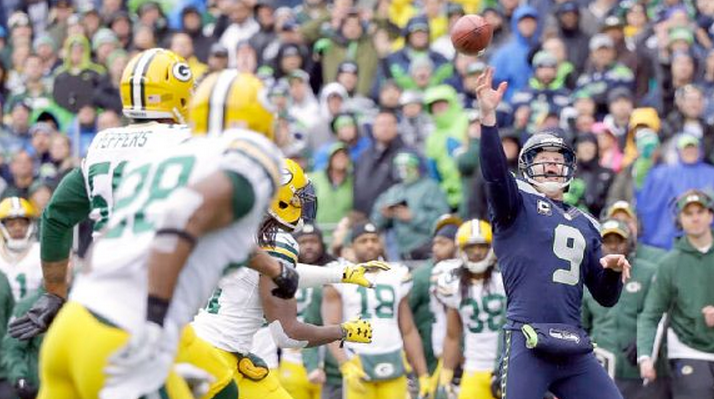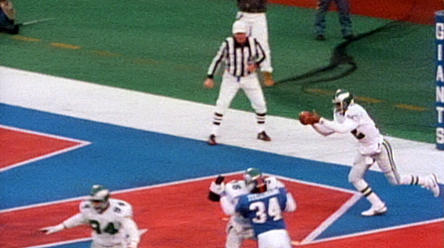Sorry to be bringing this to your attention so late. Things get a little backed up sometimes at Pro Football Daly. Still, I hope you’ll be amused.
In the NFC title game, you may recall, Seahawks punter Jon Ryan threw a 19-yard touchdown pass to tackle-eligible Garry Gilliam — on a fake-field-goal play, no less — to kick-start Seattle’s comeback from a 16-0 deficit. Many news outlets reported, as ESPN.com did, that the TD toss “was the first by a punter in NFL postseason history.”
Oh, please. In all of NFL postseason history? All 83 years of it? You might want to do a little more research on that.
Here’s a punter throwing for the game-winning score in the 1937 title game, won by the Redskins over the Bears, 28-21. It’s Sammy Baugh, who doubled as a punter-quarterback in those multitasking days (as did many others). Baugh booted five of Washington’s seven punts that afternoon — with limited substitution, it was often a shared responsibility — and also had three touchdown passes (measuring 55, 78 and 35 yards).
And here’s another punter throwing the last of his five TD passes — then a postseason record — in the Bears’ 41-21 mauling of the Redskins in the ’43 championship game. I’m talking about Sid Luckman, who also punted three times that day.
And here’s another punter throwing a touchdown pass in the 1960 title game. That would be the Eagles’ Norm Van Brocklin, a Hall of Famer like Baugh and Luckman (and the league’s MVP that season). Van Brocklin was second in passer rating (86.5) and fifth in punting average (43.1) in ’60 to lead Philadelphia to its last NFL championship.
I could go on — YouTube has some great footage of the Packers’ Arnie Herber and the Rams’ Bob Waterfield doing the same thing — but I just wanted to make a point. Yes, Ryan might be the first punting specialist to toss a TD pass in the postseason, but he’s far from the first punter.
Danny White, for goodness sakes, did it in eight different games for the Cowboys in the ’70s and ’80s. In the 1980 playoffs against the Rams, he threw for three scores and averaged 44.5 yards a punt. That’s better than Ryan’s 42.4-yard average. In the ’42 title game, Baugh had a touchdown pass and averaged 52.5 yards a punt, including a 61-yarder on a quick kick. In the ’50 championship game, Waterfield had a TD pass and averaged 50.8 yards a punt. These guys weren’t punters by default or something. They could really boot the ball.
By my count, eight NFL players threw a touchdown pass in a postseason game — and also punted — before Ryan became the “first” to do it. Moreover, these eight accomplished the feat a total of 27 times. (I’m excluding John Elway, Ben Roethlisberger and Tom Brady, who also pulled it off — in Elway’s case, on four occasions — but can’t be considered punters. Brady, by the way, did it on a night he fired six TD passes.)
Anyway, just wanted to clarify that. Congratulations, Jon Ryan. You made a nice throw, one that helped put your club in the Super Bowl. But don’t let anybody tell you an NFL punter had never done that before. Once upon a time, punters could walk and chew gum.
Source: pro-football-reference.com






